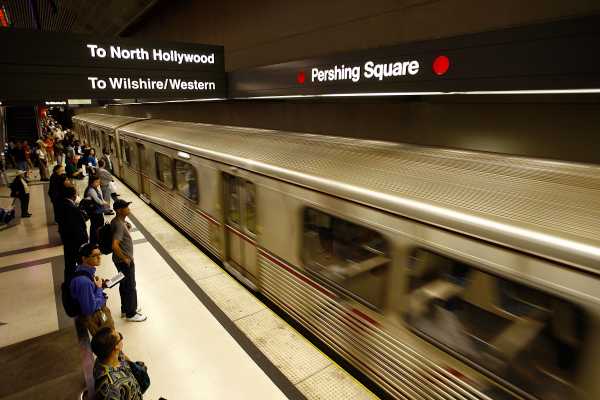
California state Sen. Scott Wiener’s SB 827 — a sweeping approach to solve California’s housing crisis by having the state government preempt local zoning ordinances and allow for greater density near rapid transit stations and high-frequency bus stops — is one of the most important ideas in American politics today.
And Conor Dougherty’s coverage of the bill with Brad Plumer for the New York Times is mostly excellent. But his tweet promoting the article engages in a common, but aggravating, rhetorical framing of the issue by construing a move to allow transit-oriented development as being an effort to “force” people out of their cars.
It’s important to be clear about this because land use is an important issue in America. It’s only going to become more important as steadily falling unemployment raises the salience of supply-side issues in the American economy. Personal liberty and the concept of freedom are, rightly, important to Americans and to American political culture. And in the case of proposals for high-density zoning, nobody is trying to force anyone to do anything.
In particular, SB 827 would change two important things about transit-adjacent land use:
- Cities and towns would have to allow taller buildings that fit more units on a given piece of land if developers and landowners want to build them.
- Cities and towns would not be allowed to require the construction of off-street parking spaces to accompany the construction of new dwellings.
Would a person who owns a single-family detached home and likes it that way be allowed to keep it that way? Absolutely. And since as best I can tell, it is genuinely the case that most middle-class Americans prefer detached houses and are willing to pay a premium for them, all indications are that a large swath of the newly zoned land would remain as detached houses that people pay a premium to live in.
But not everyone has strong preferences in this regard. And not everyone has the means to afford to live in their ideal house. (Lots of people who might enjoy owning expensive stainless steel appliances nonetheless get by okay with regular ones.) So some of the land would be reused for townhouses and apartments, greatly increasing the number of people who can afford to live in California.
In terms of parking, most of these new buildings will almost certainly feature new off-street parking spaces. Cars are useful and places to park cars are useful, and people are normally willing to pay money to obtain useful things.
At the same time, parking takes up land. And in some parts of the country (California certainly included), land is expensive, so paying the full price of a parking space might get expensive. The question is whether towns should require that new developments come with a certain minimum amount of new parking attached (as virtually every city, including New York City, currently does) or whether they should simply allow people to decide how much parking they want to pay for.
Obviously, all this does have implications for automobile use. If you allow for denser construction and fewer parking spaces, you will get some households that don’t own a car. You’ll also get some households that contain two adults and only one car as opposed to the one-car-per-adult standard that prevails in most of America.
What’s more, since the neighborhoods will be denser, many of the households that live in them will eschew the car for at least some trips — perhaps driving to work but walking to nearby restaurants, or commuting on mass transit but driving the car for big grocery runs. And, again, since the neighborhoods will be denser, the average drive will be shorter.
So the overall sense that SB 827 would reduce California’s per person vehicle miles traveled is almost certainly correct. (Aggregate VMT might well rise since the population would rise.) But nobody is forcing anyone to do anything. It’s the status quo that forces a particular form of land use — detached houses with plenty of parking — on the vast majority of the developed land in America.
Sourse: vox.com






